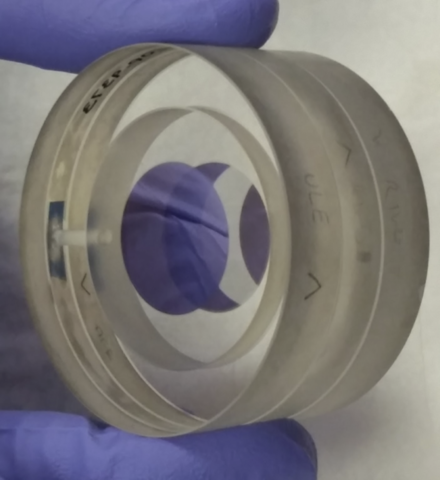
A small role can make an astronomical impact, as is the case for a tiny NIST-built piece of a new planet-hunting project from NASA and the National Science Foundation. In the outskirts of Tucson, Arizona, an ultraprecise spectrograph at the WIYN Observatory is starting the search for exoplanets (planets outside of our solar system) that could be habitable. The gravitational pull from a planet orbiting a star makes that star wobble slightly, which shifts the color of light that the star emits. Scientists plan to use a visible light spectrograph called NEID to track that shifting.
Enter NIST. We provided an astro-etalon that the astronomers can use as a reliable reference for their measurements of light. Unlike a frequency comb, which actively emits multiple colors of light, an etalon takes a more passive approach by filtering light with a cavity that allows only certain colors to pass through. It is simple, easy to manage and can identify more colors of light than a laser frequency comb, making it a critical part of the NEID calibration suite. That said, it’s a cylinder only two inches in diameter, housed in a metal box that keeps it in vacuum and at a stable temperature. That’s one small piece for a telescope, one giant leap for astronomy.
Find out more about frequency comb technology and how it fits into our exploration of the cosmos:
- Optical Frequency Combs
- NIST ‘Astrocomb’ Opens New Horizons for Planet-Hunting Telescope
- Sub-Neptune Sized Planet Validated With the Habitable-Zone Planet Finder
Follow us on social media for more like this from all across NIST!

